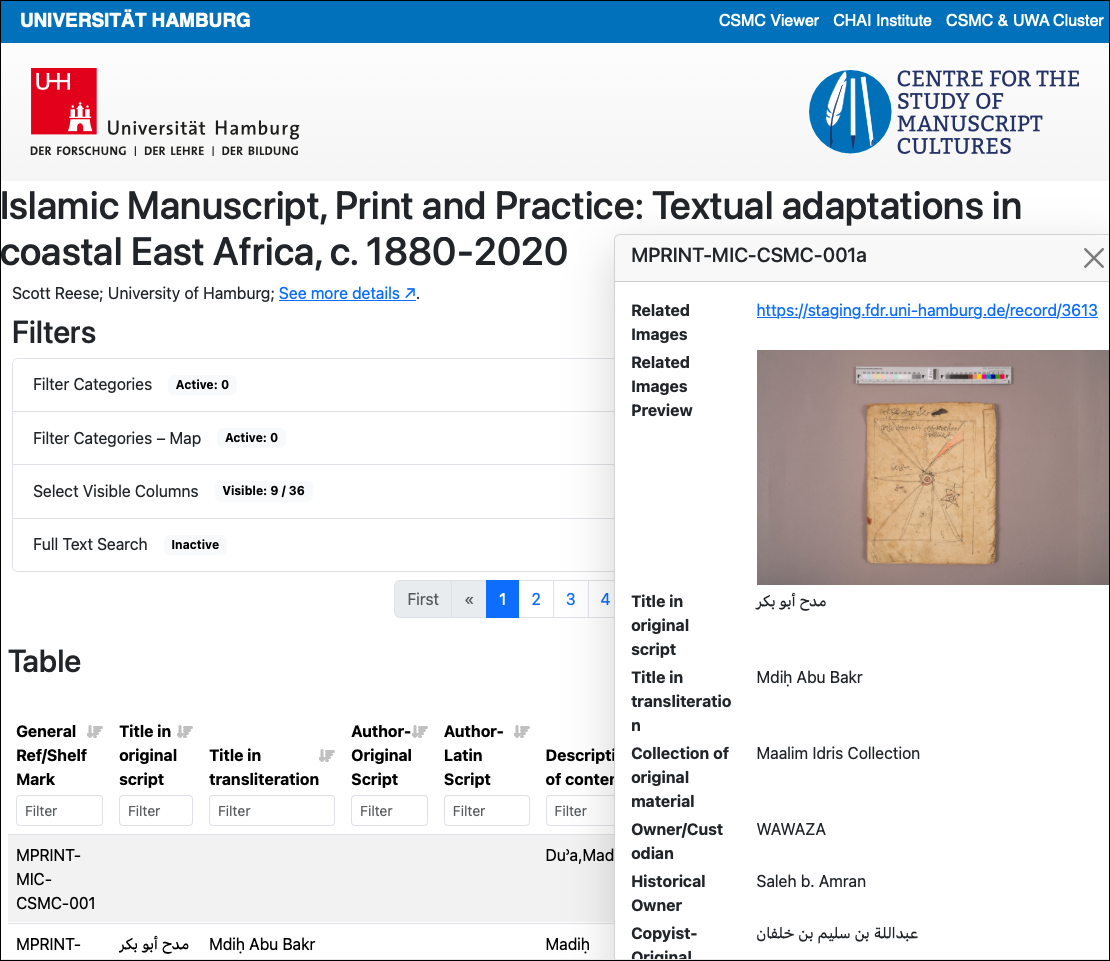Data LinkingMprinT Information System Released
7 July 2025

Photo: Maalim Idris Collection
MprinT examines how Islamic religious life changed with the advent of print on the Swahili coast. A new information system now allows users to engage with a growing amount of source materials.
How did the advent of print in the 19th century transform Islamic religious life in East Africa? Did the spread of printed texts shift religious authority away from local Sufi brotherhoods toward a more text-centred, global Islam? Or is the reality more nuanced? While many scholars have suggested that Sufi traditions and their associated texts were marginalised in the modern era of print, important questions remain. Were Sufi texts truly abandoned, or did they continue to influence religious practices? In what ways did oral recitation, ritual, and textual adaptation shape the shift from manuscript to print? Furthermore, did these changes unfold differently depending on region, generation, or gender?
Led by Scott Reese and Anne Bang, the MprinT project at the University of Bergen investigates these questions by examining the evolution of Islamic textual culture along the Swahili coast. By tracing the spread of both manuscript and printed texts from around 1900 onwards and documenting how these materials were read, shared, and recited, the project seeks to determine whether print technology disrupted longstanding traditions or enabled new forms of continuity.
The ‘Data Linking’ (Research Field F) team, in particular Sylvia Melzer, Ralf Möller, Thomas Asselborn, Magnus Bender, and Florian Marwitz, developed the information system for MprinT, which has recently been published with an initial data set. This system was developed in collaboration with members of the Center of Sustainable Research Data Management, in particular Kai Wörner and Stefan Thiemann, and Karsten Helmholz at the CSMC.

Click here to start the application
A central aim of MprinT is to provide access to relevant source materials and to trace the transmission of these documents, both in print and through oral tradition. The online information system provides researchers with a wide range of sources. In particular, it includes valuable information on the age and provenance of written artefacts. High-quality images of the manuscripts, which are linked to the University of Hamburg’s Research Data Repository, enable users to explore selected documents in detail. An interactive map will allow for precise geographical visualisation of the written artefacts once geo-coordinates are available in the data set.
In accordance with the FAIR principles, such an information system is usually archived at the end of a project. The Data Linking team also developed an app that allows users to check the content in the information system in advance before the content is archived.
The MprinT information system is freely accessible to all users and will be extended with new data over the next weeks.


